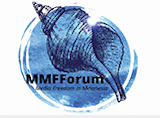Strengthening the voices of human rights defenders in the media
A case study on addressing sorcery accusation related violence in Papua New Guinea
Abstract
Civil society and human rights defenders in Papua New Guinea have played an important role in bringing about legislative changes with regard to domestic and sorcery accusation related violence in recent years. Their insights in understanding how to address complex issues at the community level when accusations occur have also proven crucial to keeping people safe and providing processes to hold perpetrators accountable. However, the mainstream media has rarely reported on their stories and included their voices in the reporting of sorcery accusation related violence. They have focused on exposing the problem, often by showcasing the horrific nature of some of the crimes related to accusations, instead of further investigating possible solutions. In this paper we explore our work with human rights defenders to capture their experiences around sorcery accusations and violence and provide ways to bring their stories into the mainstream media. In particular, we explore questions around the ethics of representation when it comes to reporting human rights abuses and violence and suggest alternative ways of reporting.
Downloads
Metrics
References
Biersack, A., Jolly, M., & Macintyre, M. (2016). Gender violence and human rights: Seeking justice in Fiji, Papua New Guinea and Vanuatu. Canberra, ACT: ANU Press.
Bushman, B. J., & Anderson, C. A. (2015). Understanding causality in the effects of media violence. American Behavioral Scientist, 59(14), 1807-1821. doi:10.1177/0002764215596554
Chandler, J. (2013, February 15). It’s 2013, and they’re burning ‘witches’. Global Mail. Retrieved from https://web.archive.org/web/20150318071214/http:/www.theglobalmail.org/feature/its-2013-and-theyre-burning-witches/558/index.html
Couldry, N. (2015). Alternative media and voice. In C. Atton (Ed.), The Routledge companion to alternative and community media (pp. 43-53). London, UK: Routledge.
Evenhuis, M. (2015). Sorcery violence in Bougainville through the lens of human rights law: A critical view. In M. Forsyth & R. Eves (Eds.), Talking it through: Responses to sorcery and witchcraft beliefs and practices in Melanesia (pp. 255-280). Canberra, ACT: ANU Press.
Eves, R., & Forsyth, M. (2015). Developing insecurity: Sorcery, witchcraft and Melanesian economic development (SSGM Discussion Paper 2015/7). Canberra, ACT: ANU.
Gormley, A., & Allan, S. (2019). Re-imagining human rights photography: Ariella Azoulay’s Intervention. In I. S. Shaw & S. Selvarajah (Eds), Reporting human rights, conflicts, and peacebuilding (pp. 203-220). Switzerland: Springer.
Gregory, S. (2010). Cameras everywhere: Ubiquitous video documentation of human rights, new forms of video advocacy, and considerations of safety, security, dignity and consent. Journal of Human Rights Practice, 2(2), 191-207. doi:10.1093/jhuman/huq002
Gwangilo, P. (2017, 18 December). Torture of aunt turns Umba into human rights defender. The National, p. 16.
Kemmis, S., McTaggart, R., & Nixon, R. (2014). The action research planner: Doing critical participatory action research. Singapore: Springer.
Kidd, D., Rodríguez, C., & Stein, L. (2009). Making our media: Global initiatives toward a democratic public sphere. Cresskill, NJ: Hampton Press.
Lambert, J., & Hessler, B. (2018). Digital storytelling: Capturing lives, creating community. Milton, UK: Routledge.
Lawrence, S. E.-L. (2015). Witchcraft, sorcery, violence: Matrilineal and decolonial reflections. In M. Forsyth & R. Eves (Eds.), Talking it through: Responses to sorcery and witchcraft beliefs and practices in Melanesia (pp. 55-73). Canberra, ACT: ANU Press.
Lyons, K. (Producer). (2020). ‘So many women were killed’: Fighting sorcery-related violence in Papua New Guinea [Video]. The Guardian. Retrieved from https://www.theguardian.com/world/video/2020/feb/03/sanguma-fighting-sorcery-related-violence-in-papua-new-guinea-video
Manney, P. J. (2008). Empathy in the time of technology: How storytelling is the key to empathy. Journal of Evolution & Technology, 19(1), 51-61.
Mondo, L. (2016, March 18). Sorcery, its mysteries and miseries. The National, p. 39.
Robie, D. (2013). ‘Four Worlds’ news values revisited: A deliberative journalism paradigm for Pacific media. Pacific Journalism Review : Te Koakoa, 19(1), 84-110. https://doi.org/10.24135/pjr.v19i1.240
Rodríguez, C. (2011) Citizens’ Media Against Armed Conflict: Disrupting Violence in Colombia. Minneapolis: University of Minnesota Press.
Romano, A. (2010). International journalism and democracy civic engagement models from around the world (1st ed.). Florence: Taylor and Francis.
Rooney, M. N. (2017, November 1). Media challenges as Papua New Guinea fights gendered and sorcery related violence [Blog post]. Devpolicy Blog. Retrieved from https://devpolicy.org/media-challenges-as-papua-new-guinea-fights-gendered-and-sorcery-related-violence-20171101/
Sampaio-Dias, S. (2016). Reporting human rights (Global crises and the media, Vol. 20). New York, NY: Peter Lang International Academic Publishers.
Shaw, I. S. (2011). ‘Human rights journalism’: A critical conceptual framework of a complementary strand of peace journalism. In I. S. Shaw, J. Lynch, & R. A. Hackett (Eds.), Expanding peace journalism: Comparative and critical approaches (pp. 96-121). Sydney: Sydney University Press.
Sirias, J. (2016). Sorcery cases on the rise: Turi. The National. Retrieved from http://www.thenational.com.pg/sorcery-&cases-rise-turi/
Spurgeon, C., & Burgess, J. (2015). Making media participatory: Digital storytelling. In C. Atton (Ed.), The Routledge companion to alternative and community media (pp. 403-413). London, UK: Routledge.
Statement on sorcery-related killings and impunity in Papua New Guinea. (2013). [Press release]. Retrieved from https://un.org.au/files/2013/06/Statement-on-Sorcery-related-Killings-and-Impunity-in-Papua-New-Guinea.pdf
Stewart, P. J., & Strathern, A. (2003). Witchcraft, sorcery, rumors and gossip. Cambridge, UK: Cambridge University Press.
Tarawa, H. (2016, August 2). Two men arrested, charged over sorcery killing. The National. Retrieved from http://www.thenational.com.pg/two-men-arrested-charged-over-$sorcery-killing
Thomas, R. J. (2018). Harm in journalism. In P. L. Plaisance (Ed.), Communication and media ethics (pp. 215-234). Boston, MS: De Gruyter Mouton.
Thomas, V., Kauli, J., & Rawstorne, P. (2017). Understanding gender based violence and sorcery accusation related violence in Papua New Guinea—An analysis of data collected from Oxfam Partners 2013–2016. Goroka, PNG: Oxfam.
Thousands attend anti-violence protest in PNG. (2013, May 15). ABC News. Retrieved from https://www.abc.net.au/news/2013-05-15/an-png-gathers-for-send-day-of-haus-krai/4690870
UNDP, & PNG Department of Community Development and Religion. (2016). Painim aut na luksave: Understanding gender-based violence to secure sustainable development in Papua New Guinea. Retrieved from https://static1.squarespace.com/static/5bc57ec8d7819e1e854bd21b/t/5bf7408cc2241bd501ea3318/1542930607982/UNDP+PNG+Painim+Aut+Report_ak_230816.pdf
Webb, E. (Producer). (2018, June 2). The witch hunts of Papua New Guinea [Video]. BBC News. Retrieved from https://www.bbc.com/news/av/world-asia-44333447/the-witch-hunts-of-papua-new-guinea

Copyright (c) 2020 Verena Thomas, Jackie Kauli

This work is licensed under a Creative Commons Attribution-NonCommercial 4.0 International License.















